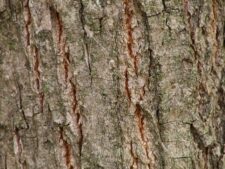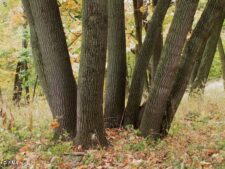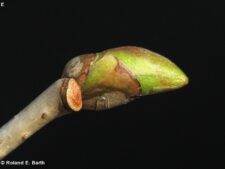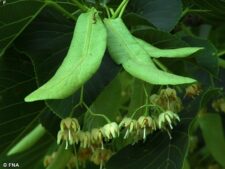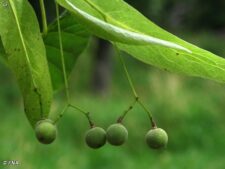
This large native tree grows to 120 feet tall, typically with two or more straight trunks emerging from the same old stump or root system (C). The young bark shows red-brown fissures (B); the older bark has narrow, scaly ridges. The dense foliage consists of large, heart-shaped leaves with stalks, alternating on the stems, darker green above than below (A). The winter buds are bright red (D); they turn greenish brown in the spring (E). The yellow-white flowers are fragrant and come in long-stalked clusters dangling from a unique, leafy bract (F). The fruit is spherical, less than 1/4 inch in diameter, and covered with fuzz (G).
Grows mostly in upland forests, flowering in June and July. In Fontenelle Forest, common along most upland trails. At Neale Woods, common along PawPaw Trail.
Also known as Basswood and Bee-Tree, because bees swarm the abundant flowers in season to produce a honey with a desirably distinctive taste. Native Americans made ropes and mats from the inner bark of this tree.
The content of NatureSearch is provided by dedicated volunteer Naturalists of Fontenelle Forest who strive to provide the most accurate information available. Contributors of the images retain their copyrights. The point of contact for this page is: Roland Barth.

